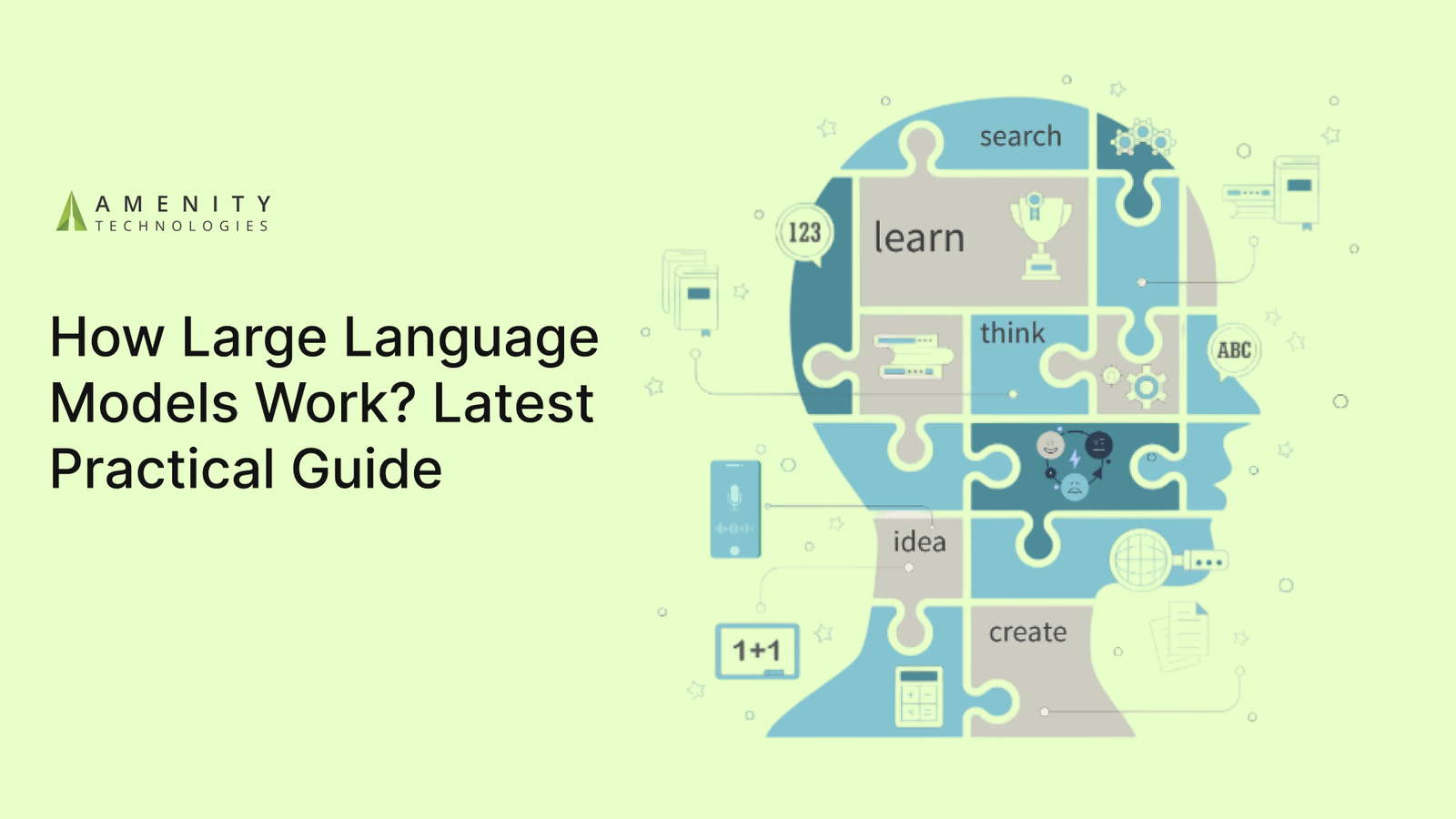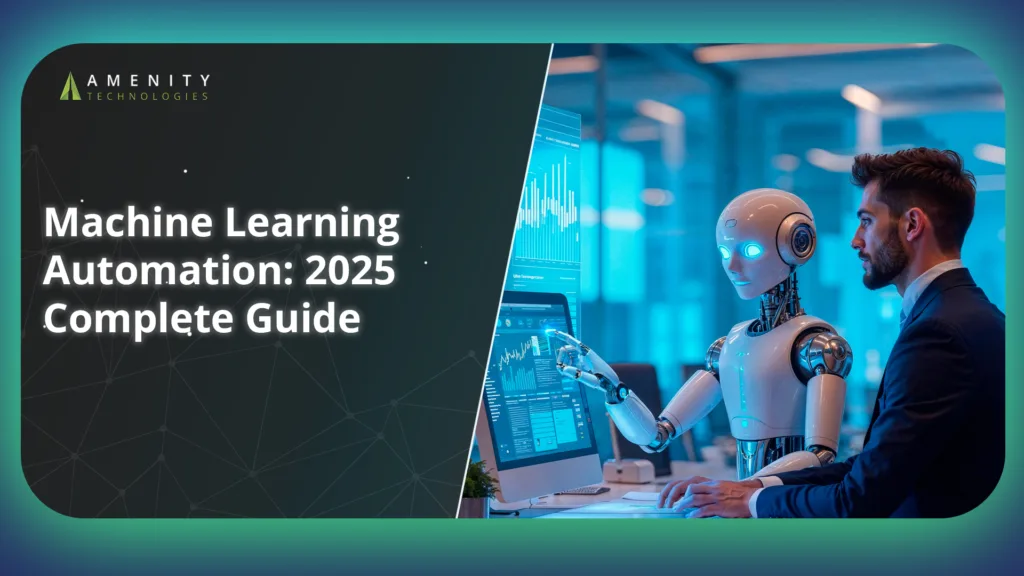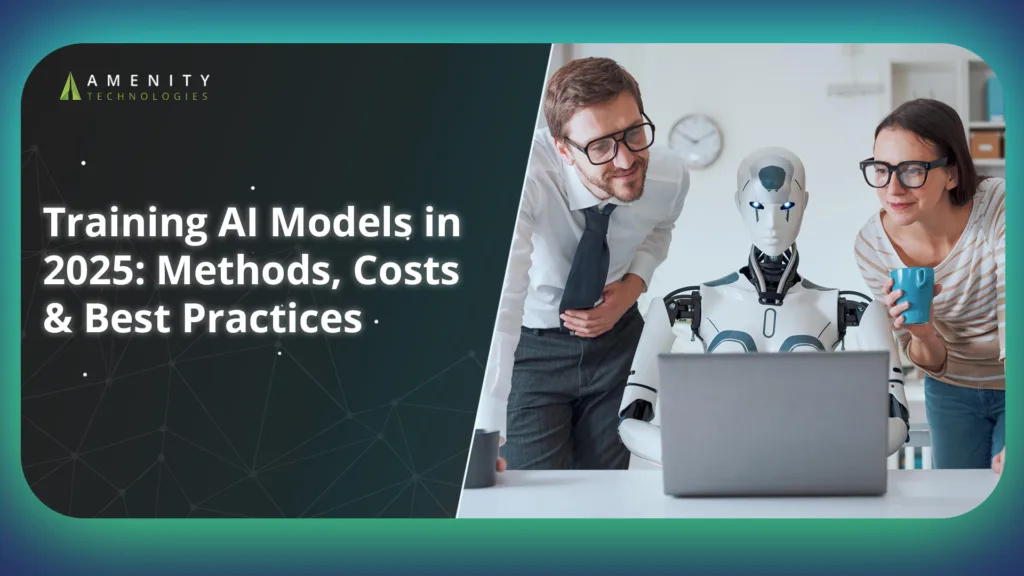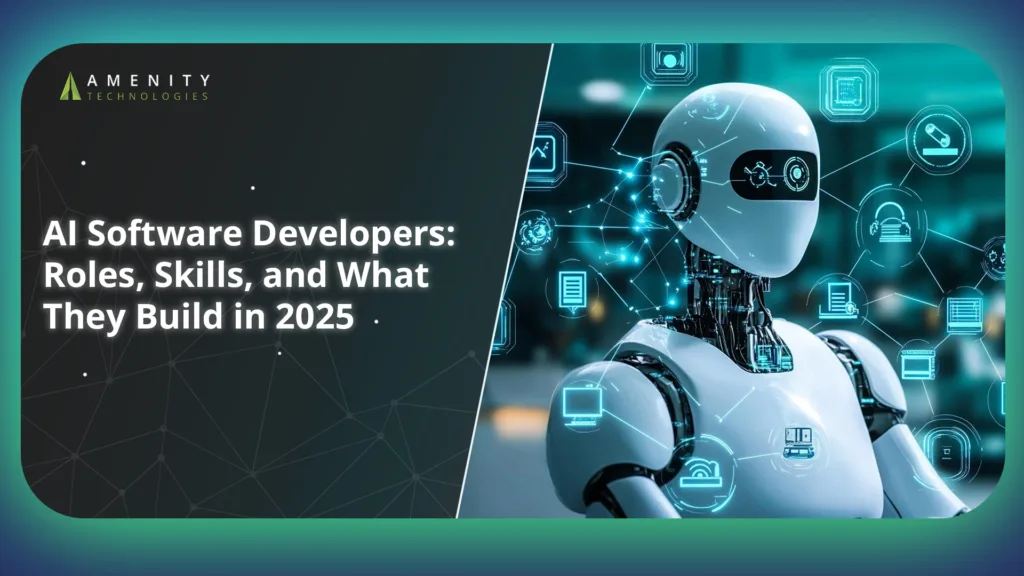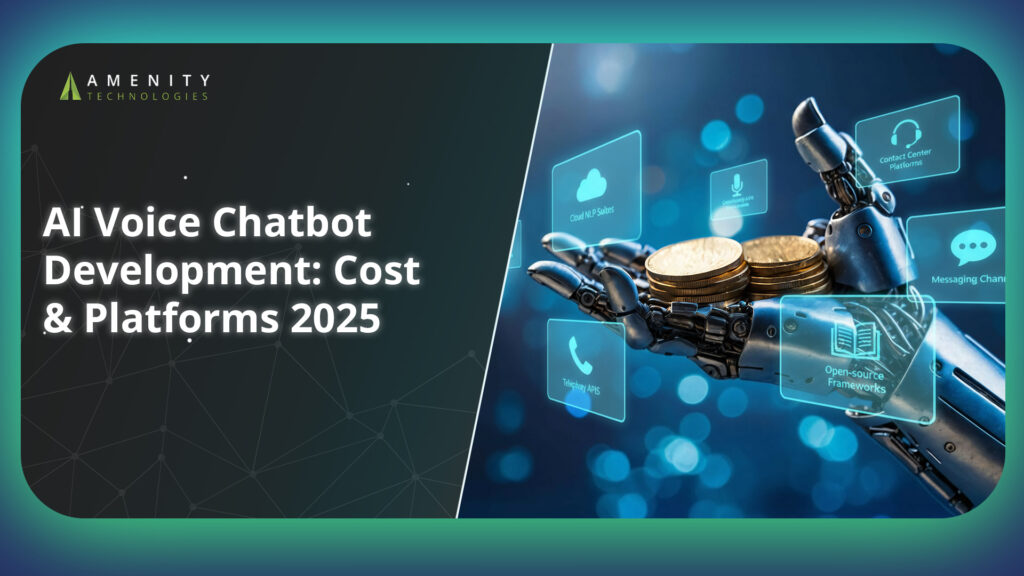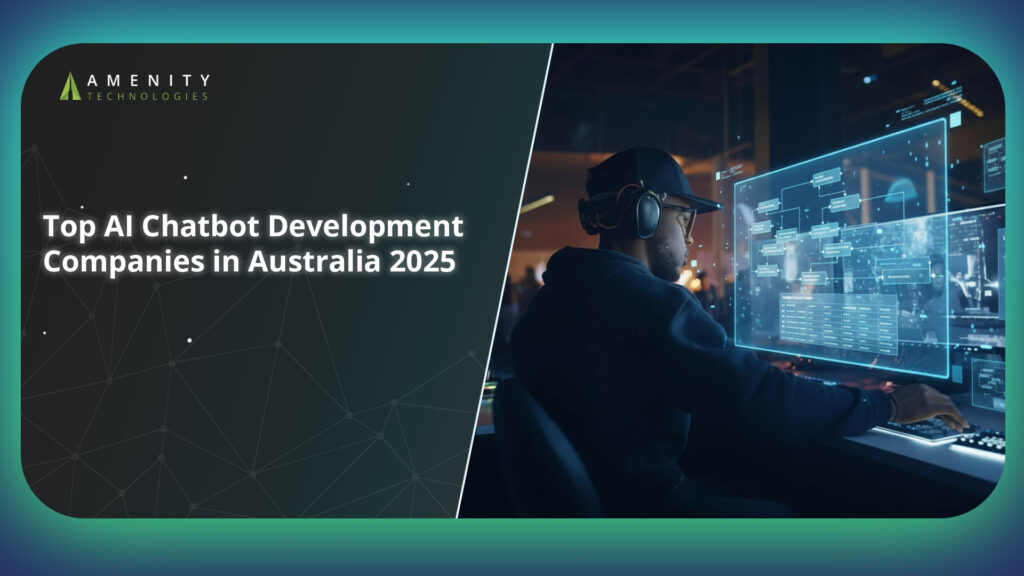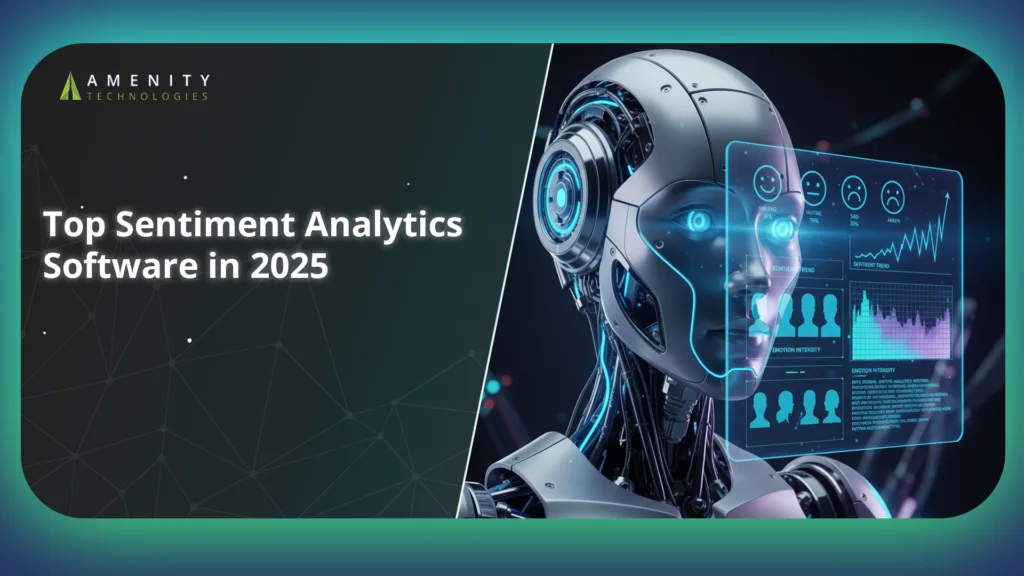Large language models (LLMs) are reshaping how businesses and individuals interact with technology every day. Did you know that the AI market involving language models is projected to reach over $20 billion by 2027, growing at a compound annual rate above 30%?
What makes these models so powerful that they can generate coherent text, translate languages, and even write code? How do they learn to understand context and deliver responses that often feel surprisingly human?
These questions matter because large language models are no longer just academic tools, they power chatbots, virtual assistants, content creation, and much more.
This guide breaks down the technology behind LLMs in simple terms, covering everything from their core architecture to how they learn and improve. Whether you want to explore new AI tools or understand the technology fueling your favorite apps, this practical overview will give you clear insights.
What is a Large Language Model?
Large language models are advanced AI systems designed to understand and generate human-like text. At their core, these models predict the next word or token in a sequence based on the context provided by previous words. This simple yet powerful ability allows them to create sentences, answer questions, translate languages, and even generate creative content.
These models find applications in various areas like chatbots that respond naturally to customer queries, writing assistants that help draft emails or articles, tools that summarize long documents, and search engines that improve relevance. Their ability to grasp context and generate coherent text sets them apart from older language processing technologies.
By learning patterns from massive amounts of text data, large language models build a statistical understanding of language. This foundation lets them deliver responses that often feel intuitive and human-like, transforming how we interact with machines.
Transformer Architecture: The Heart of Large Language Models
Most large language models rely on a transformer-based architecture to process and generate text efficiently. This architecture handles vast amounts of data while capturing complex relationships in language.
The process begins with tokenization, where input text breaks down into smaller pieces called tokens. Tokens might be words, subwords, or characters. Then, positional encoding assigns each token a position within the sequence, helping the model understand the order of words, which is essential for making sense of context.
Central to transformers is the self-attention mechanism. This lets the model weigh the importance of different tokens relative to each other. Instead of reading text step-by-step, the model analyzes the entire sequence simultaneously, capturing subtle relationships across the text. Multiple attention heads work in parallel to gather diverse contextual information.
After self-attention, feedforward layers process the data further, and residual connections help maintain stability across the many stacked layers of transformers. These layers work together, forming deep networks capable of understanding and generating complex language patterns.
This combination allows large language models to deliver impressive accuracy and versatility in tasks ranging from translation to summarization.
Training Large Language Models: From Pre-training to Fine-Tuning
Training large language models involves multiple steps to build both general language understanding and task-specific skills:
Step 1. Pre-training
Pre-training forms the foundation of how large language models learn language. During this phase, the model digests vast amounts of text from books, websites, and other sources to understand grammar, facts, and reasoning patterns. It predicts the next token in sentences, helping it develop a broad knowledge base without needing labeled data. This stage is essential for giving the model a general understanding of human language.
Step 2. Fine-tuning
This step refines the model’s abilities by training it on more specific datasets related to particular industries or tasks. For example, fine-tuning on legal texts sharpens the model’s grasp of legal terminology and concepts. This stage helps adapt the general model to perform well in focused applications, making it more useful and accurate for specific business needs.
Step 3. Instruction tuning and reinforcement learning from human feedback (RLHF)
This step improves the model’s alignment with human expectations. Through curated instructions and iterative feedback, the model learns to produce responses that are more relevant, appropriate, and helpful. This step addresses issues like bias and incorrect outputs by involving human evaluators in the training loop.
Step 4. In-context learning
In-context learning enables the model to adjust its behavior on the fly based on examples or prompts given by the user during interaction. Instead of retraining the model, this technique uses the input context to guide how the model responds, allowing for flexible and customized output without extensive additional training.
Enhancing LLM Output: Retrieval and Multimodality
Retrieval-augmented generation (RAG) significantly boosts the accuracy and relevance of large language models by integrating external information during response creation. Instead of relying solely on the knowledge embedded during training, RAG enables the model to pull in real-time data from databases, documents, or knowledge bases. This approach reduces hallucinations and outdated facts, ensuring the AI produces answers grounded in the latest and most precise information. It allows businesses to provide more trustworthy outputs across applications like customer support, research assistance, or content creation.
Multimodal models expand the capabilities of traditional language models by processing various data types such as text, images, audio, and video simultaneously. This versatility opens up new use cases where a richer understanding of input is required. For example, a multimodal model can interpret an image and generate descriptive text, or analyze audio and provide corresponding transcripts or summaries. These models make interactions more intuitive and comprehensive, especially in sectors like healthcare, entertainment, and education, where mixed media is common.
Limitations and Emergent Abilities
While large language models offer impressive capabilities, they come with some limitations that businesses need to understand. One common challenge is the generation of inaccurate or misleading information, often called hallucinations. These errors occur because the models predict text based on patterns rather than verified facts. Bias in outputs is another concern, as models may reflect stereotypes present in their training data. Additionally, running and maintaining these models requires significant computational power, which can lead to high operational costs.
On the flip side, language models often display emergent abilities that were not explicitly programmed. These include skills like multi-step reasoning, code generation, and even translation between languages. Such capabilities arise as models scale up and learn from diverse data sources. These unexpected strengths allow businesses to explore new ways to use AI, moving beyond simple text generation to more complex problem-solving and creative tasks.
Practical Deployment & Use Cases
Large language models have revolutionized how companies interact with data and customers by automating complex language tasks. These models power a wide range of applications that save time, reduce costs, and improve accuracy across industries. Understanding their practical uses helps businesses tap into AI’s full potential.
1. Chatbots & Customer Support
Large language models significantly improve chatbots by enabling more natural, human-like conversations. These chatbots can understand intent better, respond with relevant answers, and handle a wider variety of customer queries without escalating to human agents. This reduces wait times and operational costs while enhancing user satisfaction. Businesses use AI-powered chatbots for everything from e-commerce support to technical troubleshooting, allowing 24/7 availability and consistent service quality.
2. AI Agents & Workflow Automation
By leveraging language models, AI agents can automate complex workflows that once required human intervention. These agents handle tasks such as processing invoices, managing emails, and generating reports, freeing teams from repetitive work. Workflow automation powered by AI improves efficiency by reducing errors and speeding up task completion. This is especially valuable in sectors like finance, HR, and supply chain management, where accuracy and speed are vital.
3. Coding and Data Analysis
Developers use large language models as coding assistants to write, review, and debug code faster. These AI tools understand context and provide suggestions or generate entire code blocks, saving significant time in software development cycles. Additionally, data analysts apply language models to interpret large datasets, generate insights, and create reports in natural language, making complex data more accessible across organizations.
4. Knowledge Retrieval
With vast amounts of company data stored in documents, emails, and databases, finding relevant information quickly becomes a challenge. Large language models enable intelligent search and summarization capabilities, extracting key points and answering questions based on internal knowledge. This capability supports decision-making by reducing the time employees spend searching for information and ensuring that insights are accurate and up to date.
How Amenity Technologies Can Help?
Amenity Tech simplifies the complex process of integrating large language models into business operations. From strategic model selection to integrating in your workflow, we help you navigate you to balancing performance and cost-efficiency.
With Amenity Tech, you gain seamless integration of language models into real-time workflows, allowing your applications to respond dynamically with context-aware answers.
We support agentic workflows, helping businesses automate tasks that require multi-step reasoning or interaction with multiple systems. Our monitoring tools provide ongoing oversight, including model version control and compliance features, ensuring your AI deployments remain secure, reliable, and auditable.
Whether building chatbots, automating complex processes, or launching multimodal applications, Amenity Tech acts as your technical partner to deploy scalable and secure large language models faster, with less risk and greater impact.
Conclusion
Large language models have transformed how businesses interact with information, customers, and workflows. Their ability to generate text, retrieve knowledge, and automate tasks opens new opportunities for innovation and efficiency. Understanding the inner workings of these models—from transformer architecture and tokenization to training methods and real-time enhancements—empowers organizations to deploy them with confidence and purpose.
As these models continue to improve and expand into multimodal capabilities, their practical applications will only grow broader and more impactful. Companies that invest in large language models today position themselves to lead in a fast-changing digital world. Partnering with expert providers like Amenity Technologies ensures your journey into AI is strategic, scalable, and secure, unlocking true business value with every interaction.
FAQs
Q1: What makes transformers effective for language models?
Transformers process all tokens in a sentence at once using self-attention. This mechanism helps the model understand context better than older sequential methods. As a result, large language models generate more accurate and fluent text, even across complex inputs.
Q2: What is the role of tokenization in LLMs?
Tokenization breaks down input text into smaller pieces—words, subwords, or characters—so the model can analyze patterns. This step is essential to how a language model interprets, processes, and generates meaningful output.
Q3: How does retrieval-augmented generation improve output?
Retrieval-augmented generation (RAG) lets LLMs pull in real-time external data during inference. This helps improve factual accuracy, reduce hallucinations, and make outputs more grounded in current information—especially useful for knowledge-intensive tasks.
Q4: Can LLMs handle multi-language or image-text tasks?
Yes. Multimodal LLMs are designed to handle combinations of text, audio, and visual inputs. Some support multilingual content as well, making them useful for image captioning, multilingual customer service, and cross-channel automation.
Q5: What risks are associated with LLM deployment?
Large language models may generate biased content or incorrect information, and require significant compute resources. Monitoring, fine-tuning, and usage safeguards help mitigate these risks, especially in enterprise settings.
Q6: How do I start using LLMs for my business?
Begin with a focused use case, like a chatbot, summarization tool, or internal search assistant. Choose a reliable foundation language model, define clear KPIs, and work with an implementation partner to customize and scale.


